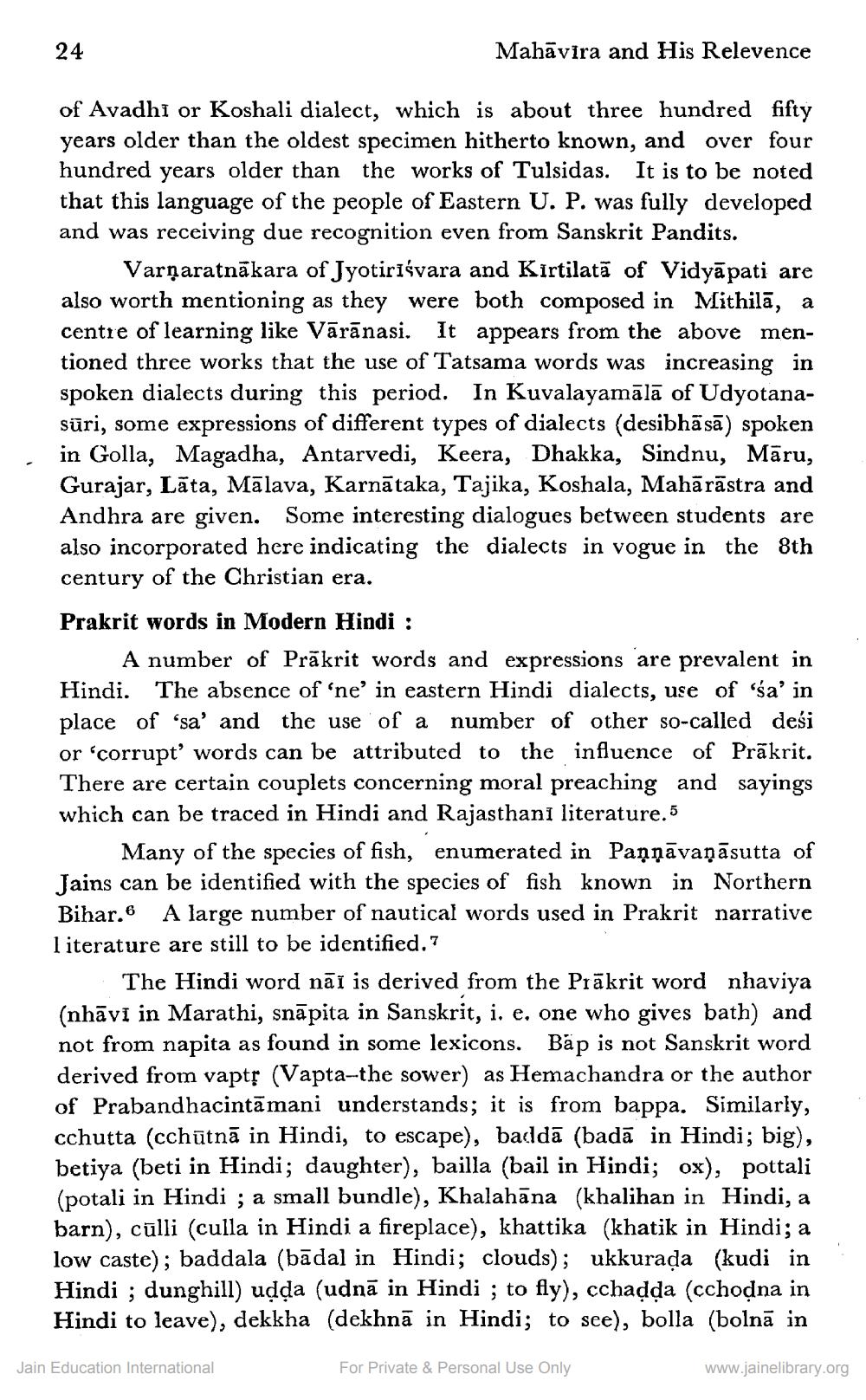________________
24
Mahavira and His Relevence
of Avadhi or Koshali dialect, which is about three hundred fifty years older than the oldest specimen hitherto known, and over four hundred years older than the works of Tulsidas. It is to be noted that this language of the people of Eastern U. P. was fully developed and was receiving due recognition even from Sanskrit Pandits.
Varṇaratnākara of Jyotirīśvara and Kirtilata of Vidyapati are also worth mentioning as they were both composed in Mithilā, a centre of learning like Vārānasi. It appears from the above mentioned three works that the use of Tatsama words was increasing in spoken dialects during this period. In Kuvalayamālā of Udyotanasūri, some expressions of different types of dialects (desibhāsā) spoken in Golla, Magadha, Antarvedi, Keera, Dhakka, Sindnu, Māru, Gurajar, Lāta, Mālava, Karnātaka, Tajika, Koshala, Mahārāstra and Andhra are given. Some interesting dialogues between students are also incorporated here indicating the dialects in vogue in the 8th century of the Christian era.
Prakrit words in Modern Hindi :
A number of Prakrit words and expressions are prevalent in Hindi. The absence of 'ne' in eastern Hindi dialects, use of 'sa' in place of 'sa' and the use of a number of other so-called desi or 'corrupt' words can be attributed to the influence of Prakrit. There are certain couplets concerning moral preaching and sayings which can be traced in Hindi and Rajasthani literature.5
Many of the species of fish, enumerated in Paņṇāvaṇāsutta of Jains can be identified with the species of fish known in Northern Bihar.6 A large number of nautical words used in Prakrit narrative literature are still to be identified.7
The Hindi word nāï is derived from the Prakrit word nhaviya (nhāvi in Marathi, snāpita in Sanskrit, i. e. one who gives bath) and not from napita as found in some lexicons. Bāp is not Sanskrit word derived from vaptr (Vapta-the sower) as Hemachandra or the author of Prabandhacintamani understands; it is from bappa. Similarly, cchutta (cchutnā in Hindi, to escape), baddā (badā in Hindi; big), betiya (beti in Hindi; daughter), bailla (bail in Hindi; ox), pottali (potali in Hindi ; a small bundle), Khalahāna (khalihan in Hindi, a barn), culli (culla in Hindi a fireplace), khattika (khatik in Hindi; a low caste); baddala (bādal in Hindi; clouds); ukkuraḍa (kudi in Hindi; dunghill) uḍḍa (udna in Hindi; to fly), cchaḍḍa (cchoḍna in Hindi to leave), dekkha (dekhnā in Hindi; to see), bolla (bolnā in
For Private & Personal Use Only
Jain Education International
www.jainelibrary.org




